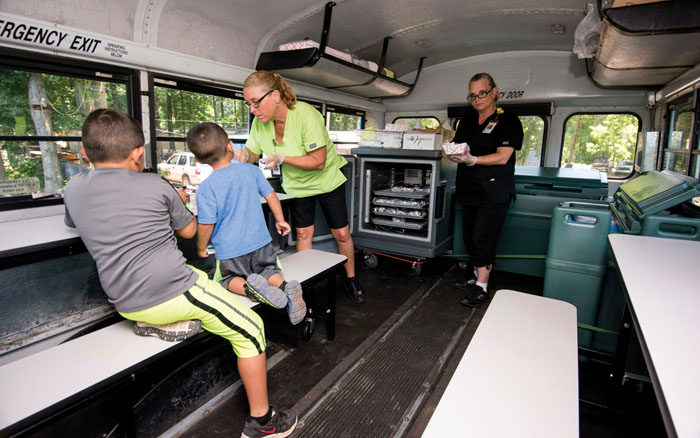Editorial: Hunger in a land of plenty
Published 12:00 am Wednesday, June 13, 2018

- Traci Keever and Faye Sutton serve a meal for two children at the Rowan-Salisbury Schools nutrition bus for lunch at Matika Village in 2016. Jon C. Lakey/Salisbury Post file photo
As Congress considers making food stamps more difficult to get, 49 Rowan County sites will open this summer to serve meals to children who otherwise might go hungry. What’s wrong with this picture?
Congress should worry less about putting pressure on the Supplemental Nutrition Assistance Program, or SNAP, and more about why, in this day of rich corporate profits and growing wealth at the top, there are so many working poor families who struggle to put food on the table.
The U.S. Department of Agriculture funds the summer meal program operated by the Rowan-Salisbury Schools. Starting today, buses and trucks will fan out across the county each weekday loaded with sandwich lunches and, for some sites, breakfast. The meals will be served at churches, schools and community buildings. In half the locations, children will actually eat on one of two buses. (Kudos to Fred Stanback for donating money for the second bus this year.)
Sixty-three percent of the students in Rowan-Salisbury Schools qualify for the free and reduced meal program, and in recent years programs have been established to send food home with them on weekends for fear they’ll go hungry until Monday. Summer is no different, just a lot longer. For young brains and bodies to thrive, children need regular meals and good nutrition. Consider this yet another way the school system is trying to improve student achievement.
The SNAP program is also part of the agriculture department. In North Carolina — where the program already has work requirements for recipients — the average allotment per person in a qualifying family is $119.49 a month. That’s about $3.97 a day.
That’s something else Congress can do: try eating three meals a day on $3.97.

